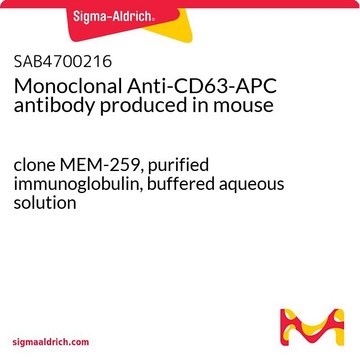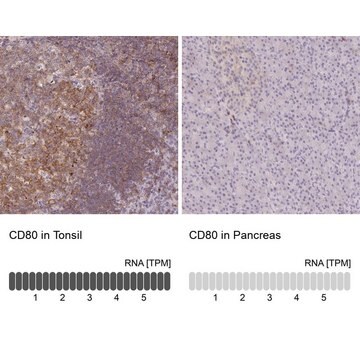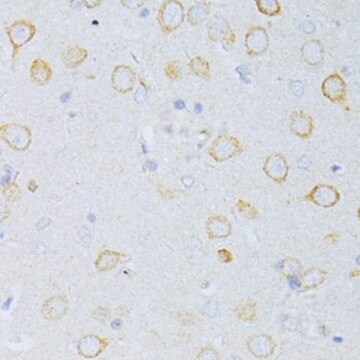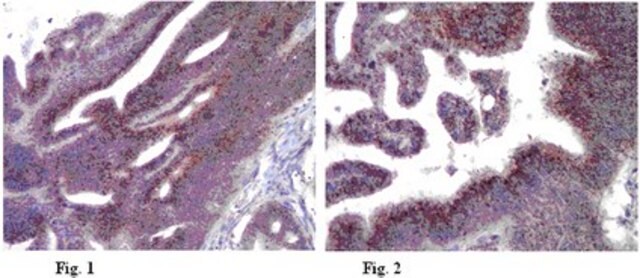MABF2159
Anti-CD63 (LAMP3) Antibody, clone ME491
clone ME491, from mouse
Synonym(e):
CD63 antigen, Granulophysin, Lysosomal-associated membrane protein 3, LAMP-3, Melanoma-associated antigen ME491, OMA81H, Ocular melanoma-associated antigen, Tetraspanin-30, Tspan-30
About This Item
Empfohlene Produkte
Biologische Quelle
mouse
Antikörperform
purified immunoglobulin
Antikörper-Produkttyp
primary antibodies
Klon
ME491, monoclonal
Speziesreaktivität
human
Verpackung
antibody small pack of 25 μg
Methode(n)
flow cytometry: suitable
immunocytochemistry: suitable
immunohistochemistry: suitable (paraffin)
western blot: suitable
Isotyp
IgG1κ
NCBI-Hinterlegungsnummer
UniProt-Hinterlegungsnummer
Posttranslationale Modifikation Target
unmodified
Angaben zum Gen
human ... CD63(967)
Allgemeine Beschreibung
Spezifität
Immunogen
Anwendung
Entzündung & Immunologie
Immunocytochemistry Analysis: A representative lot detected CD63 (LAMP3) in Immunocytochemistry applications (Atkinson, B., et. al. (1984). Cancer Res. 44(6):2577-81).
Flow Cytometry Analysis: A representative lot detected CD63 (LAMP3) in Flow Cytometry applications (Li, J., et. al. (2003). J Immunol. 171(6):2922-9).
Western Blotting Analysis: A representative lot detected CD63 (LAMP3) in Western Blotting applications (Smith, M., et. al. (1997). Melanoma Res. 7 Suppl 2:S163-70).
Immunohistochemistry Analysis: A representative lot detected CD63 (LAMP3) in Immunohistochemistry applications (Li, J., et. al. (2003). J Immunol. 171(6):2922-9).
Qualität
Western Blotting Analysis: 2 µg/mL of this antibody detected CD63 (LAMP3) in human platelet lysate.
Zielbeschreibung
Physikalische Form
Lagerung und Haltbarkeit
Sonstige Hinweise
Haftungsausschluss
Sie haben nicht das passende Produkt gefunden?
Probieren Sie unser Produkt-Auswahlhilfe. aus.
Analysenzertifikate (COA)
Suchen Sie nach Analysenzertifikate (COA), indem Sie die Lot-/Chargennummer des Produkts eingeben. Lot- und Chargennummern sind auf dem Produktetikett hinter den Wörtern ‘Lot’ oder ‘Batch’ (Lot oder Charge) zu finden.
Besitzen Sie dieses Produkt bereits?
In der Dokumentenbibliothek finden Sie die Dokumentation zu den Produkten, die Sie kürzlich erworben haben.
Unser Team von Wissenschaftlern verfügt über Erfahrung in allen Forschungsbereichen einschließlich Life Science, Materialwissenschaften, chemischer Synthese, Chromatographie, Analytik und vielen mehr..
Setzen Sie sich mit dem technischen Dienst in Verbindung.








